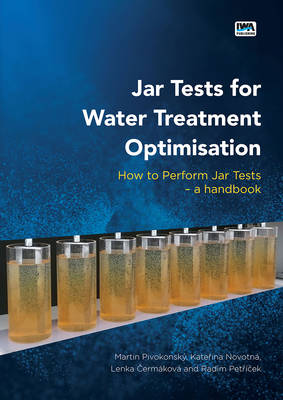
- Afhalen na 1 uur in een winkel met voorraad
- Gratis thuislevering in België vanaf € 30
- Ruim aanbod met 7 miljoen producten
- Afhalen na 1 uur in een winkel met voorraad
- Gratis thuislevering in België vanaf € 30
- Ruim aanbod met 7 miljoen producten
Zoeken
Jar Tests for Water Treatment Optimisation: How to Perform Jar Tests - A Handbook
Martin Pivokonský, Kateřina Novotná, Lenka Čermáková, Radim Petříček
Paperback | Engels
€ 41,95
+ 83 punten
Omschrijving
The book is intended as a handbook providing detailed instructions for the correct conducting of jar tests, which are needed for the optimisation of the coagulation/flocculation process. It contains the essential theoretical background of coagulation/flocculation, including a description of the influence of different parameters on the coagulation efficiency of various impurities (e.g. pH value and type/dose of coagulant), and floc properties and their separation (e.g. mixing intensity, mixing time, but also type/concentration of coagulant and impurities). The principle of jar tests is explained and parameters possible to optimize (i.e. coagulation pH, coagulant dose, flocculation aid dose, mixing intensity and mixing time) are discussed. Laboratory equipment for jar tests is proposed, including mixers and instructions for calculating a mixing intensity (necessarily expressed by the global shear rate/velocity gradient G). Mixing intensities for various purposes are recommended. Detailed practical instructions of how to perform jar tests follow, including a determination of the dose of reagents for pH adjustment and coagulant dose, dosing sequence, floc separation after jar tests by sedimentation and/or centrifugation simulating sand filtration, sampling, measuring necessary parameters (pH, coagulant residuals, alkalinity, residual impurity concentrations etc.), data recording, data processing and jar test evaluation (with specific examples). The handbook also contains a supplementary part with tables for conversion of the molar to mass concentration (and vice versa) of coagulants, and instructions for diluting coagulants and reagents for pH adjustment.
Specificaties
Betrokkenen
- Auteur(s):
- Uitgeverij:
Inhoud
- Aantal bladzijden:
- 70
- Taal:
- Engels
Eigenschappen
- Productcode (EAN):
- 9781789062687
- Verschijningsdatum:
- 15/04/2022
- Uitvoering:
- Paperback
- Formaat:
- Trade paperback (VS)
- Afmetingen:
- 156 mm x 234 mm

Alleen bij Standaard Boekhandel
+ 83 punten op je klantenkaart van Standaard Boekhandel
Beoordelingen
We publiceren alleen reviews die voldoen aan de voorwaarden voor reviews. Bekijk onze voorwaarden voor reviews.











